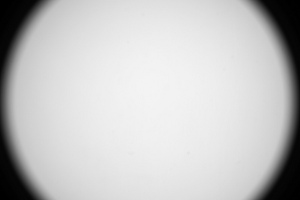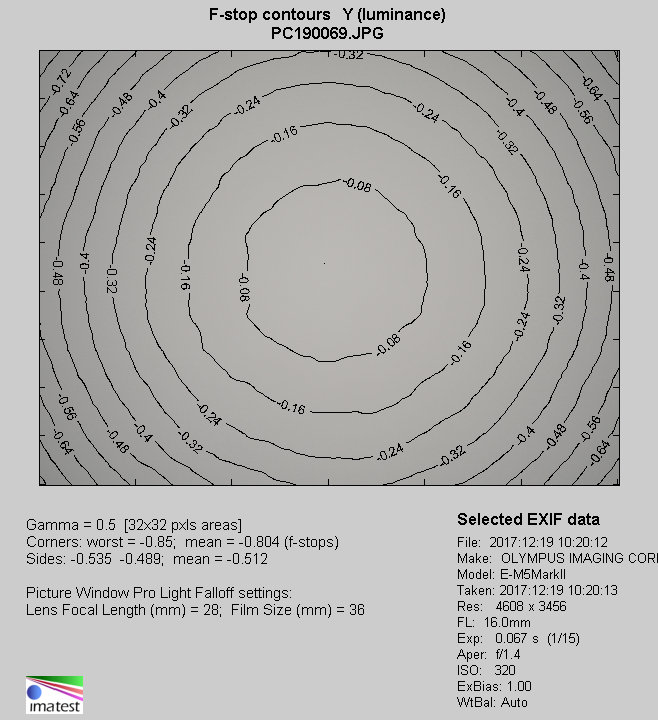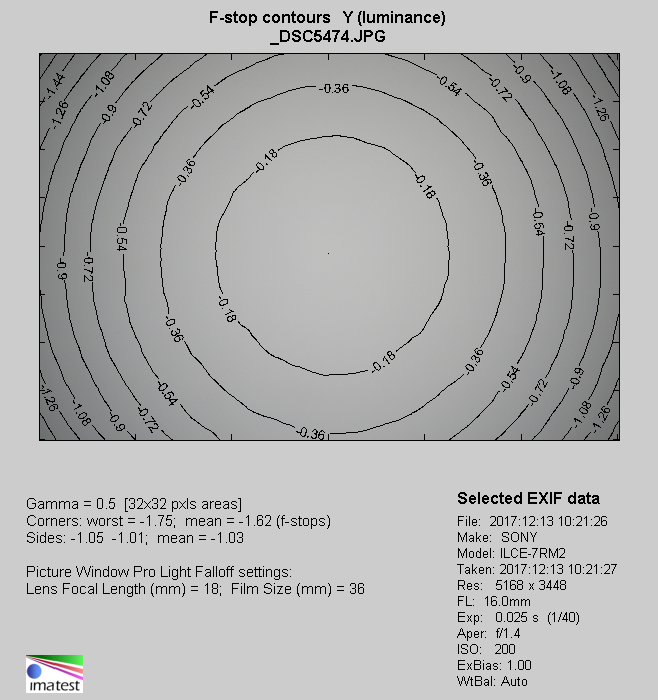Sigma C 16 mm f/1.4 DC DN
8. Vignetting
| Olympus E-M5 II, f/1.4 | Olympus E-M5 II, f/2.0 |

|

|
In this case the lens fares very well. You get chances to notice that aberration only at the maximum relative aperture where it is 24% (−0.80 EV). By f/2.0 the vignetting disappears practically completely, reaching just 7% (−0.21 EV).
Please Support UsIf you enjoy our reviews and articles, and you want us to continue our work please, support our website by donating through PayPal. The funds are going to be used for paying our editorial team, renting servers, and equipping our testing studio; only that way we will be able to continue providing you interesting content for free. |
- - - - - - - - - - - - - - - - - - - - - - - - - - - - - - - - - - - - - - - - - - - - - - - -
Results for RAW files are a bit higher – it’s a result of JEPG files correction and cropping – but the difference never exceeds 2%. It means also in the case of RAW files the vignetting is corrected very well indeed.
Of course the APS-C sensor is a greater challenge for the optics of the lens. Below we presents the results reached by the lens attached to the Sony A7R II in the APS-C mode.
| Sony A7R II, APS-C, f/1.4 | Sony A7R II, APS-C, f/2.0 |

|

|
| Sony A7R II, APS-C, f/2.8 | Sony A7R II, APS-C, f/4.0 |

|

|
In this case there are no differences between RAW and JPEG files. At the maximum relative aperture the brightness loss in the frame corners amounts to 43% (−1.62 EV). It’s a lot but, taking the parameters of the lens into account, the result is not bad. For example the more expensive Fujinon 1.4/16, a physically bigger device, had a result of 49%. Stopping down the aperture of the tested lens to f/2.0 allows you to decrease the vignetting to 22% (−0.73 EV). By f/2.8 that aberration is barely noticeable, reaching 12% (−0.36 EV). Further stopping down doesn’t have any measurable influence on vignetting levels.
With such a full frame body at our disposal as the Sony A7R II we could check the image circle of the tested Sigma and find out whether it is able to cover full frame. As thumbnails below show very clearly, it cannot cover such a big sensor and it lacks a lot to do so.
| A7R II, FF, f/1.4 | A7R II, FF, f/8.0 |

|

|
| Olympus O-MD E-M5 II, JPEG, f/1.4 |
 |
| Sony A7R II, APS-C, JPEG, f/1.4 |
 |






